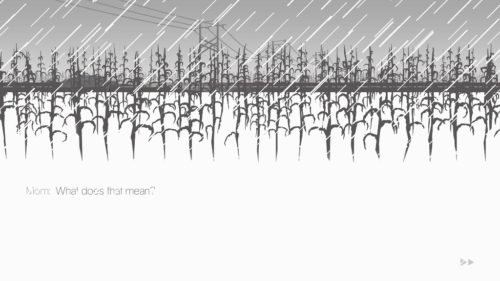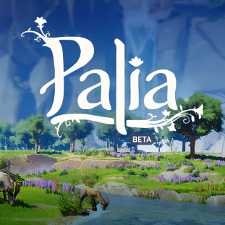 Developer: Singularity 6
Developer: Singularity 6
First Release: 2023 (Beta)
Version Played: PC Closed Beta
Humans disappeared from Palia long ago, leaving behind their ruins and the mystery about what happened. You’re a human and suddenly appear at the ruins. Time to meet the locals.
Palia is a cozy MMO with a focus on things like crafting and exploring, rather than combat. There are bows and animal hunting, but that’s as combat-oriented as it gets. Player characters don’t have hit points and simply respawn if they jump into dangerous places (like deep water).
The closed beta has two main areas and also the player housing (everyone has their own instance of the housing plot). I got lucky with closed beta access, so these are my thoughts on that.
It all starts with character creation. There are two body types (A and B) which have a set of faces linked to that body. Everything else can be used on either body. That means any voice, hairstyle, clothing or makeup. The basic selection has options for different races, including being able to have a hijab for those who want to cover their hair.
Though the body types aren’t assigned a gender, and being able to put any of the stuff on them is great, they are still rather binary in their overall shape choices. I would like a few more bodies to choose from. Or the option to choose between flat chest or breasts on the current bodies. Given the range of body types in the NPCs, I wouldn’t be surprised if this happens at some point.
Image Caption: The character creator for Palia has a starry background with the interface on top. A range of hairstyles are shown, including straight and curly hair, braids, locs, and a hijab. A colour selector has a mixture of natural shades and other colours. The character is on the left, showing the selected wavy curls hairstyle.
The way the skills are handled in the game works well. These skills are things like growing crops, fishing, bug catching, hunting, mining, chopping down trees and furniture making. What’s nice here is that very little grinding is required. Once I had a feel for where to get all the materials, I’d wander around collecting whatever was around. A bug here, a tree there, maybe some mining.
Housing is introduced very early, so I quickly started on growing some crops and setting up crafting stations. This housing area starts with some harvestable resources (trees, rocks and mushrooms) and has a private pond for some fishing. The full buildable space needs to be unlocked during play, but it’s a good size that’s clearly intended for an endgame of decorating the whole thing.
Star quality (literally marked with a star in inventory) bugs and fish can be placed as pets, so my endgame will involve whole rooms full of pets, as that’s just how I roll.
Image Caption: My character stands on the housing plot at night. The character has brown skin, black and purple curly hair, and purple clothing with a leaf pattern. A small building, fenced area with crops, windmill, work stations and two cuddling plushies, can be seen. The game interface is shown, with an inventory bar, compass, quest objectives and focus bar.
I appreciated little things, like crops not dying if they run out of water (they simply pause growth) and decor not taking up any storage space. If multiple players hit the same harvestable resource, everyone gets the full loot. These design choices help to make things more relaxed.
I also enjoyed the story so far. Humans appear with only the memory of a starry void and a reassuring voice (this is the setting of the character creator). Some quests are about visiting ruins, with a focus on exploring and solving puzzles. There’s obviously more going on here about what happened to humans and how it’s connected to the flow (a form of magical energy).
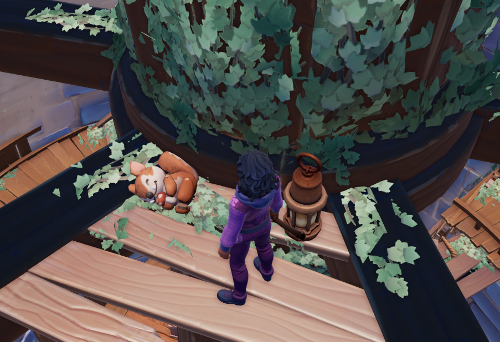
Image Caption: My character is in a derelict tower with holes in the wooden floor and ivy growing on the walls. A lantern and plushie are on the floor. The toy is a cute animal cuddling a mushroom. I want that toy.
The NPCs have lives and wander around (press m for the map to see where they are currently). Every NPC has a friendship quest line and some also have a romance quest line. These quests provide more information on the various characters and the world. Only thing I’d say here is the NPCs are purple elf people, anthro cats and robots. It’s a pity that players have to be human and can’t unlock any of those appearance options.
It’s a multiplayer game, but the current system isn’t good for people who want to directly play together. For those who try teaming up, it’s tricky to get on the same server/instance. Groups find they get split up if they change to a new area.
This means that though other players are around, it’s mostly a game for parallel play: most people play alone near each other, rather than with each other. Some resources actively need many people, such as cutting down the flow trees, but this tends to happen in an impromptu way. There isn’t a reason for the gang to stay together once it’s done.
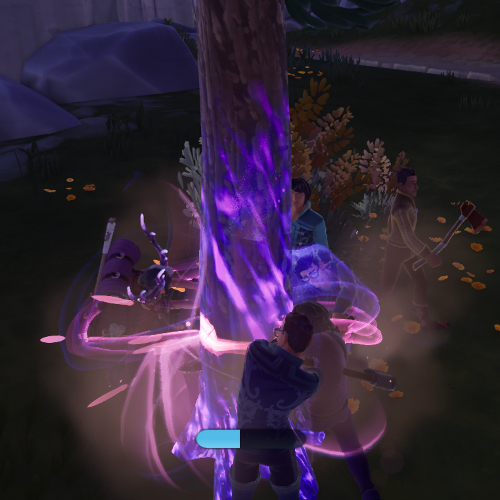
Image Caption: Multiple characters swing axes at a purple glowing tree. The tree’s health bar shows it’s taking damage.
Housing could have some potential future issues, as access is restricted. Friends can visit, but particularly as the game ages, people will want to show strangers their awesome decorations. I hope that something like the Animal Crossing dream codes might be introduced for that.
The controls are usable, but more the sort of thing I associate with console games that have been moved to the PC. The mouse controls the camera and the keys control movement. There aren’t options to lock the camera behind the avatar or to turn left/right (the camera has to be pointed in the direction of travel).
Options include things to reduce motion sickness. Most game information is text, but it would have been good to have subtitles on the speech in the character creator and the intro/exit speech of the NPCs. An option to click to start/click to stop would be nice for skills, rather than having to hold the mouse button. I can cope now, but holding down buttons was very painful at the height of my arthritis, so this will be a challenge for some gamers.
In very important news, you can pet the dog. It’s an option that comes up sometimes when you’re talking to him, though there isn’t an animation that goes with it.
The game succeeds at being cozy. The current content is a solid foundation with room to expand. It may not appeal to people who want a team game and some of the controls are not the best. In the end though, it’s free and I’m finding it fun, so I’m here to stay for a bit. I’ve got carrots to harvest.
(Shameless plug: Everyone gets a refer-a-friend link, which earns special items in the game. Here’s mine if anyone wants to sign up an account. Open beta started on 10th August 2023, so anyone can sign up now. I’m not being paid for this, I just want the cute fountain: Palia Account Signup)
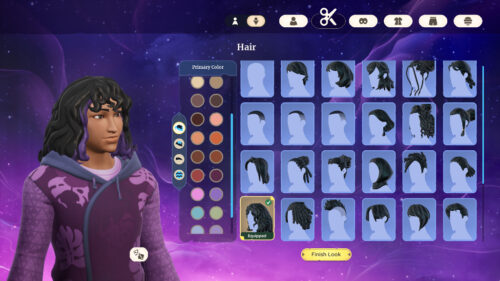
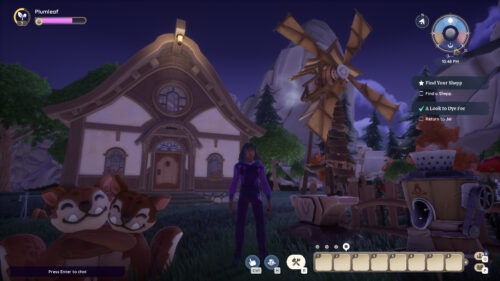
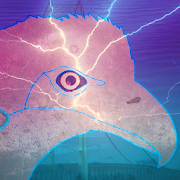 Developer: Elizabeth LaPensée
Developer: Elizabeth LaPensée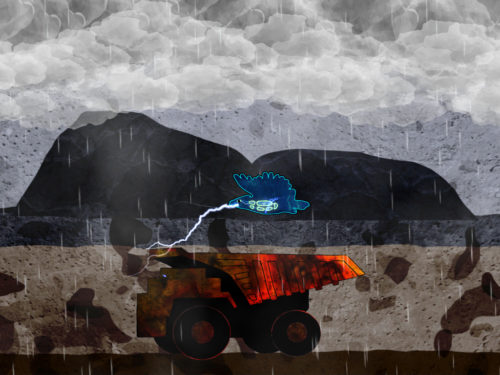
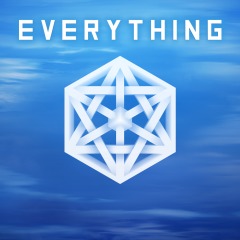 Developer: David OReilly
Developer: David OReilly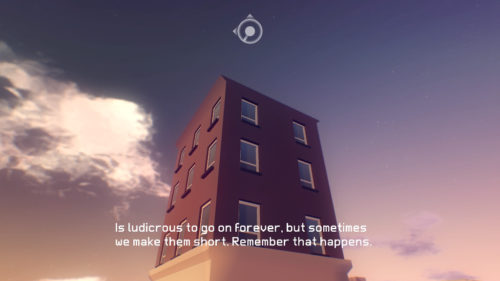

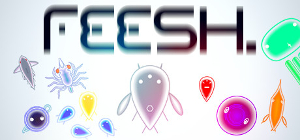 Developer: Terrifying Jellyfish
Developer: Terrifying Jellyfish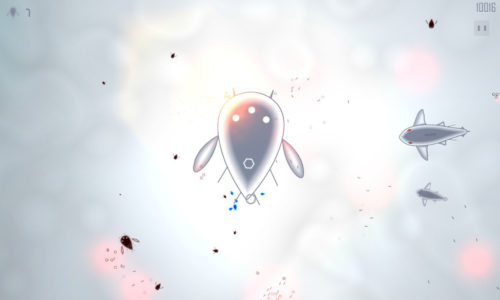
 Developer: [bracket]games
Developer: [bracket]games